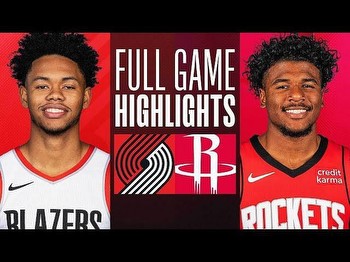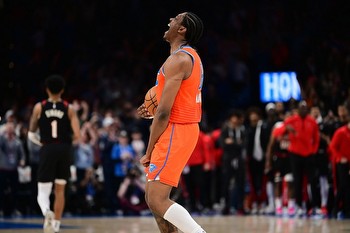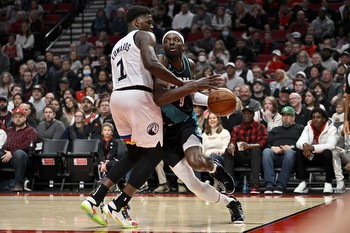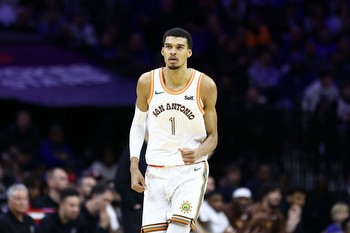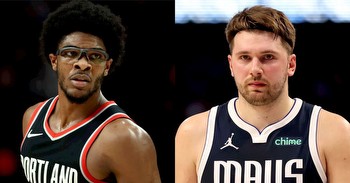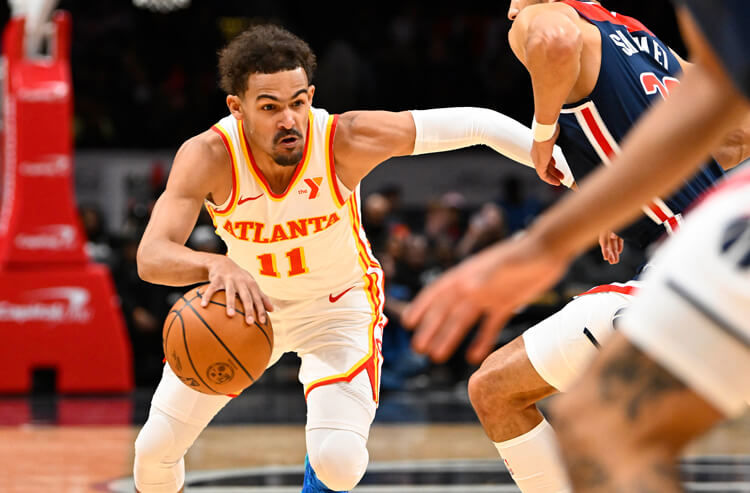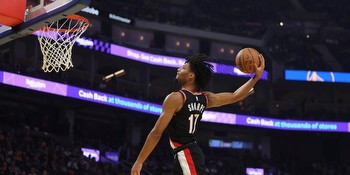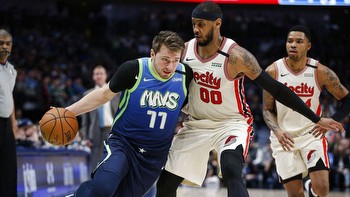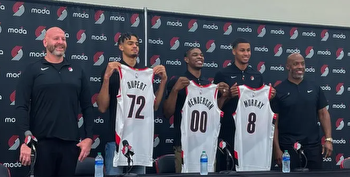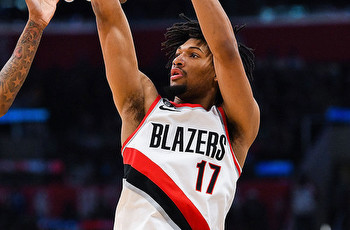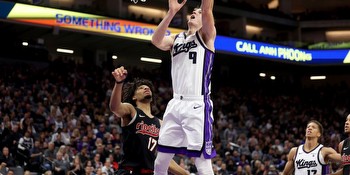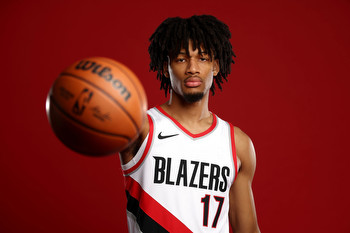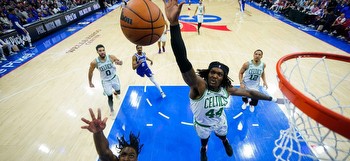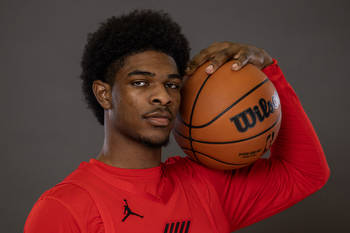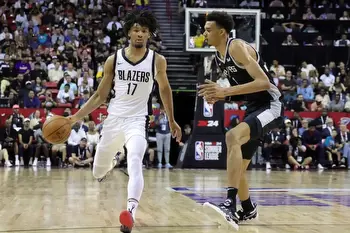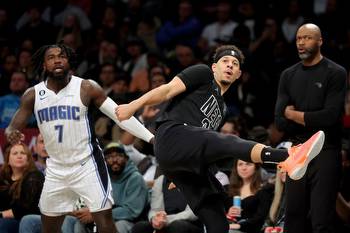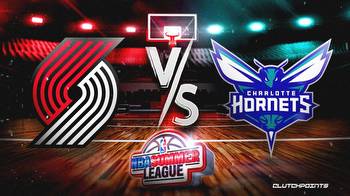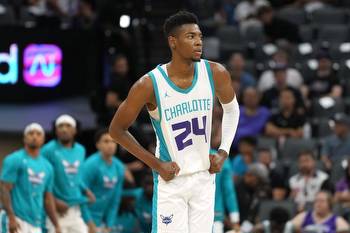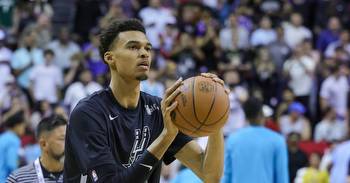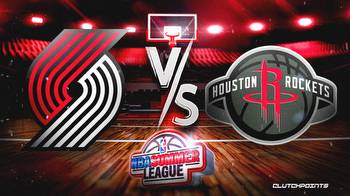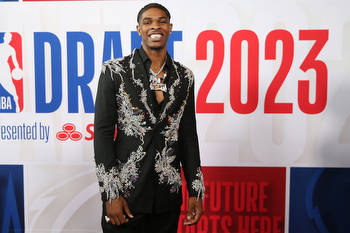Looking at the Young Trail Blazers Coming into the Season
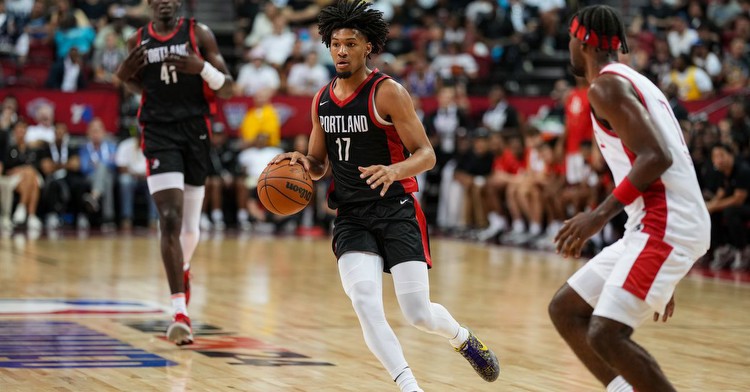
It’s been three weeks since the Portland Trail Blazers played their deck in the 2023 Las Vegas Summer League. Given that this was both the most recent example of Blazers basketball — and the last bit of on-court play until the preseason tips off in two months — it’s worth digging back into that five-game sample size to see what truly mattered and what didn’t.
The showcase was unique for the Blazers, perhaps more so than it’s been at any point over the last decade, given that it offered the first opportunity to see both of the soon-to-be-new faces of the organization in Scoot Henderson and Shaedon Sharpe on the floor at the same time.
Assuming you’ve given basketball some semblance of thought over the dog days of the NBA offseason, odds are, you’ve at least wondered about what Portland’s potential-new-look brand of on-court play could look like under the new regime. The Summer League provided a few clues of that potential and a few things to talk about. Here are a few to perhaps consider.
No. 1: Shaedon Sharpe’s crunch-time audition
The clock continues to tick, as it relates to Damian Lillard’s future with the Trail Blazers. But in a perfect world — assuming one’s “perfect world” doesn’t include him donning the No. 0 in Portland for Year 12 — one can at least hope that Lillard’s clutch gene permeates seamlessly through both Shaedon Sharpe and Scoot Henderson over their respective careers.
For everything that Sharpe did show us during a tantalizing Year One, late-game brilliance wasn’t something we saw often. It wasn’t anything of Sharpe’s wrongdoing; the 2022 No. 7 pick played in only 13 “clutch minutes,” defined by NBA.com as any game within five points with five minutes or less. He simply wasn’t a major part of Head Coach Chauncey Billups’ game-on-the-line rotation. By the mid-March, Sharpe’s time to shine, the Blazers weren’t talented enough to even compete through the fourth quarter.
This makes what we saw in the Las Vegas Summer League exhibitions that much more compelling.
Take it with two grains of salt; there were no real consequences had Sharpe missed any of these shots. But, for a player who essentially redshirted in college and was viewed as a long-term project no less than a year ago, those valuable repetitions, both physical and mental, were a sight to see during the Blazers’ 3-2 finish. He also left a lot to like at times with his defensive focus.
Some still question his motor and occasionally-too-cool approach — he doesn’t do himself a favor in that argument sometimes — but at least the numbers trended upwards with Sharpe’s crunch-time potential.
Digging a little deeper into 2022-23: he did shoot a respectable 47.7 percent in fourth quarters, the second-highest of any quarter. And, with the Blazers either leading or trailing by 10 points or less in fourth quarters, he shot 51.0 percent on (47 attempts), 41.6 percent from deep (on 12 attempts), and 78.6 percent from the free throw line (on 14 attempts). As one case in point:
There are still some causes for concern with Sharpe’s shot selection (see the 34.8 percent efficiency), and it’s still unclear how this translates when the defensive attention and pressure gets ratcheted up without Lillard’s attention. But, it was at least inspiring to get confirmation on Sharpe’s approach in must-score possessions. Perhaps that “too cool” aura has its benefits.
No. 2: Eight ball, corner pocket
Bittersweet as it may be, some Blazers observers have already begun to think about how the next iteration of Portland’s offense could look. One imagines the 2023-24 Blazers being a feisty, competitive bunch, the alley-oops and dazzling dribbling displays from Anfernee Simons and the Scoot-Sharpe grouping making them a nightly frequenter on Twitter and SportsCenter highlight reels.
Hypothetically, one could also project the Blazers becoming much more favorable to the corner 3-point shot, deemed analytically to be “the easiest shot in basketball.”
Last year’s Blazers ranked seventh-lowest when it came to corner 3-point attempts, and they were much more inclined to take above-the-break triples. Chauncey Billups’ group won’t strike you as one of the more analytically-driven teams, but given the strengths of the players in which they drafted back in June, it’s worth a hunch.
Kris Murray, the No. 23 pick, could be a surefire pick for minutes right away, especially if “the trade” kicks off the youth movement. Tracking his numbers in the Vegas exhibitions, he hit on 5-of-14 from the corners, including 4-of-10 specifically from the right side. In college, he hit over 40 percent on unguarded corner 3-pointers. There’s already some proof that he can pump and maneuver right into a pull-up, but it feels as though the lion’s share of his Year One work will come when teams are sagging in to deal with, say, Henderson’s speed.
Consider a few examples below:
Oftentimes, it was just that simple. The Blazers attempted to run a Lillard staple, “77,” or a double-drag screen, and Henderson, immediately recognizing Amen Thompson willing to concede the middle, gets right into the teeth of it, forcing a weak side tag from Jabari Smith Jr., and a crowd of four Rockets. Sitting in the shade, Murray has enough time to sign an autograph or two before lining the seams up for a corner 3-pointer.
This aligns with both what Murray did all throughout the Vegas matchups and the process of how a lot of Henderson’s assists came during his G League Ignite days, even as they mostly avoided 3-pointers. Even Rayan Rupert, despite being raw on offense, could have some level of promise here, if placed in the right corner, as highlighted by Mavs Draft.
The past numbers, as said, may slightly disagree; Portland shot just 36.1 percent as a team from the corners. The problem was, they had too many unproven shooters taking them. Each of the players atop their offensive pecking order — Lillard, Grant, Simons and Sharpe — were effective. Not so much with everyone else. This makes it more of a bold prediction: to take better advantage of Henderson’s driving ability, one anticipates more spacing, more spread pick-and-roll, as they approach something closer to the top-half in attempts.
For creativity’s sake, here’s how it shook out in infographic form:
No. 3: One trend that hopefully doesn’t stick
Similar to what football fans will see over the next few weeks in the preseason, Summer League exhibitions are a perfect place to experiment with seldom-utilized ideas and schemes just to see how they work.
In Vegas, the Blazers’ defensive approach was in the experimental phase. Sometimes it led to disastrous full court press attempts that made it seem as though opponents had a sixth player on the floor:
At other times, it led to well-timed rotations that showcased the best traits in some of their new prospects, such as this example with second-rounder Rayan Rupert in this 1-2-2, 3-2 zone switch.
When it came to their pick-and-roll coverages, the Blazers — quite literally — were given an inch, and they took it a mile, taking the term “drop coverage” to an entirely different level. It’s still sort of unclear what led to such a conservative approach; seeing it in real-time, one couldn’t help but develop the “thousand mile stare,” painfully recalling how similar it was to the 2019 Western Conference Finals, when the Blazers’ defensive strategy consisted of dropping back to the locker room on ball screens, allowing Stephen Curry pull-up-after-pull-up.
To throw out a few of the more egregious examples:
The scheme, arguably, didn’t do the Blazers bigs much of a favor, granting their opponents advantageous looks. As our Dave Deckard eloquently put it a few weeks ago, “The Blazers threw a bunch of frontcourt spaghetti against the wall this summer, hoping something would stick. Their bigs ended up just noodling around.” The strategy did somewhat help Ibou Badji and Duop Reath to average 1.8 and 1.6 blocks respectively, on the way to a few defensive highlight clips. But, given how unlikely it is that this depth of a drop would translate to the real season, perhaps it might be one worth leaving in July.
No. 4: Jabari Walker looked much improved
Before the Summer League kicked off, there were a couple of particular storylines that felt important to this writer’s eye, with Jabari Walker’s continued growth at the forefront. He looked about as one would expect a No. 57 pick to look: flashes of brilliance in his best trait or two, with some struggles adjusting to the speed, and particularly, the strength at the NBA level.
Vegas exhibitions pit him against fellow unproven players, so, it wasn’t exactly a demonstration against elite-level, top-of-the-NBA competition, but over the five-game sample size, Walker had the confidence of a man who had some of the answers to the “test.” Or, at least one that studied hard enough to know where to improve.
Take your pick on what you liked most. Spirited defensive reps against the No. 1 and No. 3 picks in Victor Wembanyama and Brandon Miller; improved muscle on attempts at the rim — a noticeable struggle as a rookie — a more confident 3-point flick, hustle plays in abundance and even a few examples of that “point forward” potential that he briefly flashed in 2022-23.
This feels like an ideal time to highlight both Badji and Reath. Overlooking those aforementioned deep drops, his rim projection was sound. Reath looked incredibly poised on offense, both on the perimeter and as a passer; something about his mannerisms and on-court aesthetic is very Zach Randolph-esque. (Or is it just me? See here and here).
But, getting back to Walker: with the loss of Trendon Watford, we went from not knowing what the Blazers’ frontcourt could look like in 2023-24 to really not knowing what the Blazers’ frontcourt could look like in 2023-24. The biggest roster moves are presumably over, aside from whatever happens via trade, and Walker is now the second-tallest non-two-way Blazer on the team at 6-foot-9.
Walker’s presence and Year Two ascension could loom large — maybe not literally, since this is arguably the NBA’s smallest team we’re talking about — and if Badji and John Butler Jr. aren’t prepared to log big minutes right away, his number will be called upon. The Summer League with 56.8 percent shooting and 50.0 percent from 3-point range (on 12 tries) were, if nothing else, a step in the right direction.

